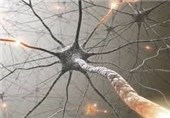Why Age Reduces Stem Cells' Ability to Repair Muscle
TEHRAN (Tasnim) – As we age, stem cells throughout our bodies gradually lose their capacity to repair damage, even from normal wear and tear.
Researchers from the Ottawa Hospital Research Institute and University of Ottawa have discovered the reason why this decline occurs in our skeletal muscle. Their findings were published online in the influential journal Nature Medicine.
A team led by Dr. Michael Rudnicki, senior scientist at the Ottawa Hospital Research Institute and professor of medicine at the University of Ottawa, found that as muscle stem cells age, their reduced function is a result of a progressive increase in the activation of a specific signaling pathway.
Such pathways transmit information to a cell from the surrounding tissue. The particular culprit identified by Dr. Rudnicki and his team is called the JAK/STAT signaling pathway.
"What's really exciting to our team is that when we used specific drugs to inhibit the JAK/STAT pathway, the muscle stem cells in old animals behaved the same as those found in young animals," said Dr. Michael Rudnicki, a world leader in muscle stem cell research. "These inhibitors increased the older animals' ability to repair injured muscle and to build new tissue."
What's happening is that our skeletal muscle stem cells are not being instructed to maintain their population. As we get older, the activity of the JAK/STAT pathway shoots up and this changes how muscle stem cells divide. To maintain a population of these stem cells, which are called satellite cells, some have to stay as stem cells when they divide. With increased activity of the JAK/STAT pathway, fewer divide to produce two satellite cells (symmetric division) and more commit to cells that eventually become muscle fibre. This reduces the population of these regenerating satellite cells, which results in a reduced capacity to repair and rebuild muscle tissue.
While this discovery is still at early stages, Dr. Rudnicki's team is exploring the therapeutic possibilities of drugs to treat muscle-wasting diseases such as muscular dystrophy. The drugs used in this study are commonly used for chemotherapy, so Dr. Rudnicki is now looking for less toxic molecules that would have the same effect.






